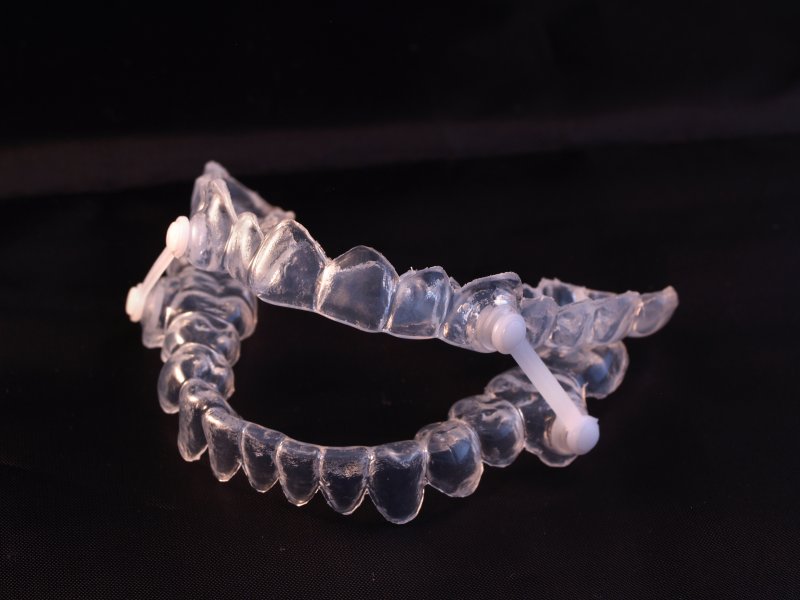How to Adjust to Your New Oral Appliance
October 25, 2020
An oral appliance offers a convenient and effective way to conquer obstructive sleep apnea (OSA). Most patients find that its portability, ease of maintenance, and other features make it vastly preferable to a CPAP machine. However, as wonderful as oral sleep appliances are, you might find that it is a bit of a challenge to adjust to using your new device. In this article, we’ll discuss some of the issues you might encounter and how you can make your adjustment process as easy as possible.
Common Issues with New Oral Appliances
An oral appliance is a foreign object in your mouth, so your body might have some strange reactions to it at first. New patients commonly experience the following:
- Tightness and discomfort: Remember that a little tightness can be a good thing because a snug fit reduces the risk that your appliance will fall out while you sleep. Your device’s hard plastic may feel unnatural in your mouth, but that is to be expected at first.
- Drooling: Your mouth kicks up its saliva production in response to foreign objects inside of it.
- Gagging: Some patients have a stronger gag reflex than others. If that is true of you, you may find it a bit difficult to keep the appliance in your mouth.
- Nighttime removals: You might unconsciously remove your appliance while you are asleep. You could even end up throwing it across the room!
Getting Through the Adjustment Period
High-quality sleep is one of the pillars of good health, so remember that the effort it takes to adjust to a new oral appliance is well worth it! The keys to getting through your adjustment period are patience and persistence. If you are committed to using your appliance every night, your body will eventually adjust to it. Most patients find that their appliance feels quite comfortable after two or three weeks of consistent use.
If you have a strong gag reflex, that might be a bit more challenging to overcome. Wearing your appliance for short periods during the day and practicing breathing through your nose can help train your body to accept rather than reject your appliance.
Of course, you are always welcome to contact the dentist who provided your appliance. Tell them about the specific issues you are experiencing, and they will offer advice and encouragement. In some cases, they might recommend that you visit them to get your appliance adjusted.
Oral sleep appliance therapy is one of the best ways to free yourself from the exhaustion and health risks that come with OSA. Your body will thank you for sticking with your treatment protocol despite any inconveniences you may experience.
About the Author
Dr. Kenneth Mogell is a dentist and sleep apnea expert who serves Boca Raton and the surrounding communities. He specializes in providing oral appliance therapy, and he is always ready to answer questions about how the therapy works and what patients can expect from it. To learn more about Dr. Mogell and the services he provides, reach out to our team at 561-353-5252.
